
Sinn Féin president Gerry Adams pictured outside the party's HQ on the Falls Road in January 1984.
IRA
The Irish Republican Army (IRA) is a name used by various paramilitary organisations in Ireland throughout the 20th and 21st centuries. Organisations by this name have been historically dedicated to irredentism through Irish republicanism.
In Irish law, this IRA was the army of the revolutionary Irish Republic as declared by its parliament, Dáil Éireann, in 1919. In the century that followed, the original IRA was reorganised, changed and split on multiple occasions, to such a degree that many subsequent paramilitary organisations have been known by that title – most notably the Provisional Irish Republican Army, which was a key participant during the 1969-1998 Troubles in Northern Ireland. The contemporary IRA organisations each claim the sole right to the name, each insisting they are the original IRA's only legitimate descendant.
After the end of the Irish Civil War (1922–23), the IRA was around in one form or another for forty years, when it split into the Official IRA and the Provisional IRA in 1969. The latter then had its own breakaways, namely the Real IRA and the Continuity IRA, each claiming to be the true successor of the Army of the Irish Republic. The IRA split into "Provisional" and "Official" factions in December 1969, after an IRA convention was held in Boyle, County Roscommon, Republic of Ireland. The two main issues at the convention were a resolution to enter into a "National Liberation Front" with radical left-wing groups, and a resolution to end abstentionism, which would allow participation in the British, Irish, and Northern Ireland parliaments.
Official Irish Republican Army
The Official Irish Republican Army or Official IRA (OIRA) was an Irish republican paramilitary group whose goal was to remove Northern Ireland from the United Kingdom and create a "workers' republic" encompassing all of Ireland. It emerged in December 1969, shortly after the beginning of the Troubles, when the Irish Republican Army (IRA) split into two factions. The other was the Provisional IRA. Each continued to call itself simply "the IRA" and rejected the other's legitimacy.
Unlike the "Provisionals", the "Officials" did not think that Ireland could be unified until the Protestant majority and Catholic minority of Northern Ireland were at peace. The Officials were Marxist-Leninists and worked to form a united front with other Irish communist groups, named the Irish National Liberation Front (NLF). The Officials were called the NLF by the Provisionals and "stickies" by nationalists in Belfast (apparently in reference to members who would glue Easter lilies to their uniforms), and were sometimes nicknamed the "Red IRA" by others.
During the 1960s, the Irish Republican Army and Sinn Féin under the leadership of Cathal Goulding, radically re-assessed their ideology. They were heavily influenced by popular front ideology and drew close to communist thinking; Goulding was instrumental in moving the IRA to the left. He argued against the policy of abstentionism and developed a Marxist analysis of Irish politics.
A key intermediary body was the Communist Party of Great Britain's organisation for Irish exiles, the Connolly Association. This organisation was formed in London in 1938 as the Connolly Club by members of the London branch of the Republican Congress, the Irish branch of the League Against Imperialism (a front for the Communist International) and the British-based Irish Self-Determination League. It takes its name from James Connolly, a socialist republican, who executed by the British Army for his part in the 1916 Easter Rising.
Goulding believed the British state deliberately divided the Irish working class on sectarian grounds, in order to exploit them and keep them from uniting and overthrowing their bourgeois oppressors. He was prominent in the various stages of Official Sinn Féin's development into the Workers' Party. He was also involved in the anti-amendment campaign in opposition to the introduction of a constitutional ban on abortion, along with his partner, Moira Woods.
In the 1960s, Sean Garland became a Marxist and was one of a generation of IRA leaders who attempted to lead the organisation away from violence and into left-wing political agitation. He worked closely in this with figures such as Cathal Goulding and Tomás MacGiolla. During the 1969/70 IRA split, Garland supported the moves to abandon abstentionism and was a key figure in Official Sinn Féin (as national organiser) and Official Irish Republican Army (as Adjutant-General).
In 1988 Sean Garland asked the KGB to provide "special training" to up to five members of the Workers' Party in order to improve party security. This request was made through the KGB station chief in Dublin, with whom Garland had "confidential contacts". The Chairman of the KGB, Vladimir Kryuchkov, viewed the request positively. However, on 12 January 1989, the International Department of the Central Committee of the Communist Party of the Soviet Union turned it down, fearing that leaked news of such cooperation would damage the Soviet relationship with the United Kingdom.
In 1999 Garland (a frequent visitor to North Korea) was allegedly observed visiting the North Korean embassy in Moscow. It was subsequently alleged that he visited to collect forged U.S. dollars which, with the help of associates, would be transported to Dublin and Birmingham where the notes would be exchanged for pounds or authentic dollars. The US authorities announced that this scheme, which they said involved several international crime syndicates and transactions worth millions of dollars, had been uncovered in "Operation Mali".
The split began with Billy McMillen (leadership council member of Official Sinn Féin) calling a meeting of IRA commanders in Belfast. Billy McKee and several other republicans arrived at the meeting armed and demanded McMillen's resignation. He refused, but many of those unhappy with his leadership broke away and refused to take orders from McMillen or the Dublin IRA leadership. Most of them joined the Provisional Irish Republican Army, when this group split off from the IRA in December 1969. McMillen himself remained loyal to the IRA's Dublin leadership, which became known as the Official IRA.
In 1969, according to Soviet dissident Vasili Mitrokhin, IRA leaders Cathal Goulding and Seamus Costello approached Michael O'Riordan (founder of the Communist Party of Ireland) with a view to obtaining guns from the Soviet KGB to defend Irish republican areas of Belfast during the communal violence that marked the outbreak of the Troubles. Mitrokhin alleges that O'Riordan then contacted the Kremlin, but the consignment of arms did not reach Ireland until 1972. The operation was known as Operation Splash. Mitrokhin's allegations were repeated in Boris Yeltsin's autobiography.
Bitter rivalry between the two groups (OIRA/PIRA) ensued and in April 1970, McMillen was shot and wounded by Provisional IRA members in the Lower Falls area of Belfast, In March 1971 the Provisionals attempted to kill McMillen again. By 1974, a group of OIRA members around Seamus Costello (vice-president of Official Sinn Féin and staff officer in the Official IRA) were unhappy with the ceasefire. In December 1974, they broke away from the Official movement, forming the Irish Republican Socialist Party and the Irish National Liberation Army.
On 28 April 1975, McMillen was shot dead by INLA member Gerard Steenson, as he was shopping in a hardware shop on Spinner Street with his wife Mary. McMillen was hit in the neck and died on the scene. His killing was unauthorised and was condemned by INLA/IRSP leader Seamus Costello. Despite this, the OIRA tried to kill Costello on 9 May 1975 and eventually killed him two years later.
Irish National Liberation Army
The INLA was founded by former members of the Official Irish Republican Army who opposed that group's ceasefire. It was initially known as the "People's Liberation Army" or "People's Republican Army". The INLA waged a paramilitary campaign against the British Army and Royal Ulster Constabulary (RUC) in Northern Ireland, however, it was smaller and less active than the main republican paramilitary group, the Provisional IRA. Members of the group used the covernames People's Liberation Army, People's Republican Army, and Catholic Reaction Force for attacks its volunteers carried out but the INLA did not want to claim responsibility for.
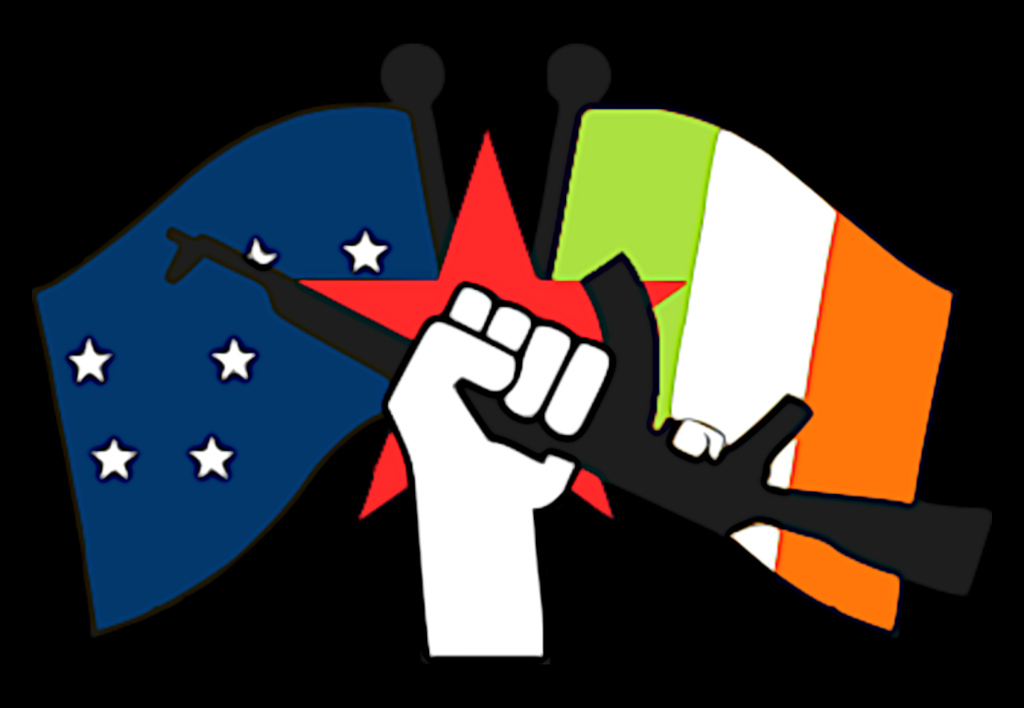
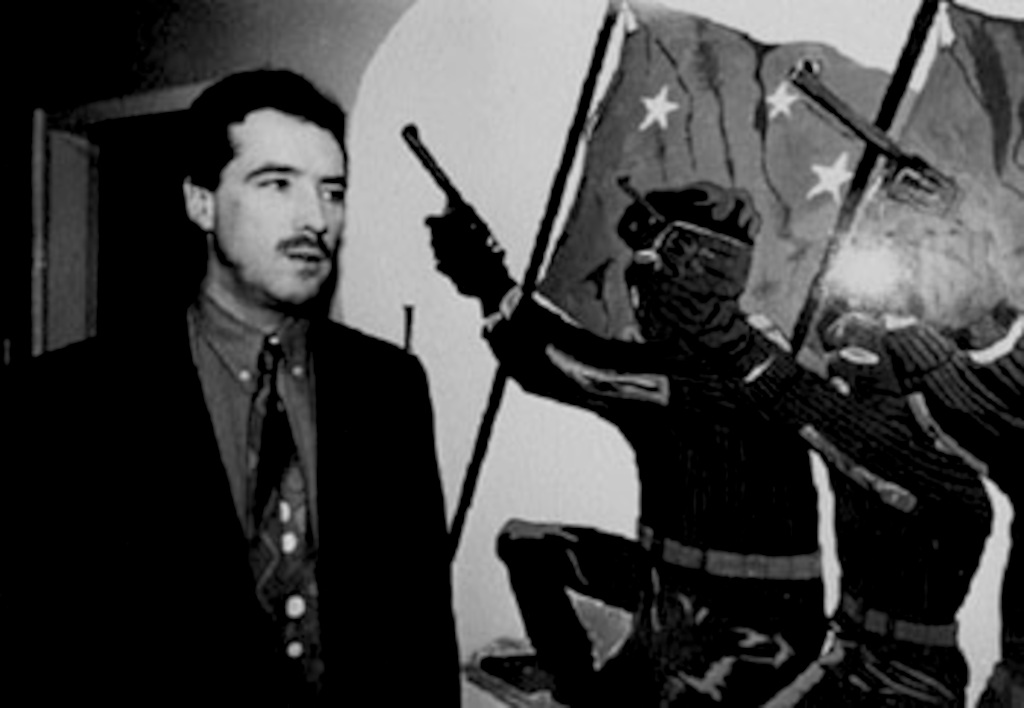
At a meeting in the Lucan Spa Hotel near Dublin, on 8 December 1974, the Irish Republican Socialist Party was formed by republicans, socialists, and trade unionists with Seamus Costello as the chairperson. At a private meeting later the same day, the Irish National Liberation Army was formed with Costello as the Chief of Staff, although its existence was to be kept secret for a time. The new grouping intended to combine left-wing politics with the "armed struggle" against British security forces in Northern Ireland.

Within days of its founding, the fledgling Irish Republican Socialist Movement was embroiled in a bitter feud with the Official IRA. The feud resulted in the attempted assassination of Official IRA leader Sean Garland who was wounded in an INLA attack near his home in the Ballymun area of Dublin (Garland was wounded six times but survived the attack). Before a truce was reached, three members of the IRSP were dead.
Despite the truce, Costello was shot dead with a shotgun as he sat in his car on Northbrook Avenue, off the North Strand Road in Dublin on 5 October 1977 allegedly by a member of the Official IRA, Jim Flynn, who happened to be in the area at the time. Costello's funeral was attended by Ruairí Ó Brádaigh, the then president of Sinn Féin and Michael O'Riordan of the Communist Party of Ireland. The INLA deemed Flynn the person responsible, and he was shot dead in June 1982 in the North Strand, Dublin, very close to the spot where Costello died.
"The Irish Republican Socialist Party was founded in 1974 by former members of Workers' Party (aka 'Official' Sinn Féin), paramilitary wing Irish National Liberation Army (INLA), was founded the same day, although its existence was intended to be kept hidden until such a time that the INLA could operate effectively."
The Irish Republican Socialist Party or IRSP is a Marxist-Leninist [Communism, Anti-globalisation, Hard Euroscepticism] and far left republican party in Ireland. It is often referred to as the "political wing" of the Irish National Liberation Army (INLA) paramilitary group. It was founded by former members of Official Sinn Féin in 1974 during the Troubles, but claims the legacy of the Irish Socialist Republican Party of 1896–1904. The IRSP are seeking the establishment of an all-Ireland "worker's republic". As of 2009, the IRSP stated that their objective will only be achieved exclusively through peaceful and political means, and in 2018 they launched the 'Yes For Unity' campaign, to campaign for a Border Poll on Irish Unity.
According to Malcolm Sutton's Index of Deaths from the Conflict in Ireland, part of the Conflict Archive on the Internet (CAIN), the INLA was responsible for at least 120 killings during the Troubles, between 1975 and 2001. This includes those claimed by the "People's Liberation Army" and "People's Republican Army". According to the book Lost Lives (2006 edition), the INLA was responsible for 127 killings. Of those killed by the INLA:
- 46 (~38%) were members or former members of the British security forces, including:
- 26 British military personnel and 2 former soldiers
- 14 Royal Ulster Constabulary officers and 4 former officers
- 2 Northern Ireland Prison Service officers
- 44 (~36%) were civilians – including politicians, alleged informers and alleged criminals
- 20 (~16%) were members or former members of republican paramilitary groups
- 8 (~6%) were members or former members of loyalist paramilitary groups
- 2 were members of the Irish security forces
Obtaining arms was one of the greatest difficulties faced by the INLA in its early years. Their avowed Marxism made them beyond help from overseas Irish Catholic supporters, who had traditionally been a lifeline for funds and weapons for Irish republicans engaged in armed struggle. Lack of weapons in the mid-Seventies led to numerous internal rows, and Costello himself was even threatened by INLA members for his failure to provide guns. The INLA's main source of arms early on was from sympathisers in the Middle East, from where they imported a contingent of AK-pattern rifles in 1978.
An arms smuggling network was later established where guns would be channelled from a Palestinian source based in Lebanon via West Germany (and later Switzerland) to a left-wing sympathiser in France and then to Ireland. The first shipment arrived in July 1979 consisting of six FN pistols, 35 automatic pistols, and 4 Uzi submachine-guns. In later years Palestinian sources would provide the INLA with hundreds of Czechoslovak VZOR pistols as well as Chinese-made SKS rifles, Rhodesian submachine-guns and Browning pistols. The INLA also acquired Škorpion machine pistols from Fatah free of charge.
The INLA also acquired Soviet-made plastic explosives, which was used in the assassination of Airey Neave. Later smaller-scale arms smuggling was carried out through a new conduit linked to the French far-left terrorist group Action directe. By the mid-1980s, separate INLA factions were trying to acquire arms. The old arms links were re-activated by remnants of the original INLA organisation based in Dublin and Munster as part of an effort to either create a new republican socialist movement or reform the existing INLA. Between 1984 and late 1986 they held meetings with Fatah and other Arab sympathisers in Prague, East Berlin, Warsaw, and Tunisia.
The 1986 United States bombing of Libya generated an anti-Western mood in the Arab world that led to a breakthrough for INLA arms procurement efforts. A large arms haul was secured through a Palestine Liberation Organisation contact in Prague which included a hundred man-portable anti-tank weapons, forty AK-47 rifles, three 12.7mm heavy machine guns, and two 80mm mortars. However four INLA members (amongst them Harry Flynn) were arrested in France as they prepared to receive the shipment. In September 1990, customs officials in Cork foiled an INLA attempt to smuggle eight rifles and 1,000 rounds of ammunition hidden in a Volkswagen camper van that arrived in a ferry from Roscoff, France. Gardaí believed the INLA had used a sleeper cell in Paris to purchase the weapons from a black market arms dealer.
Gerry Roche won agreement by a very narrow majority, on the Ard Comhairle of the lRSP to publish a newspaper. He wanted to call the paper "The Broad Front" and although permission wasn't granted he went ahead anyway, calling the paper "Freedom Struggle". In the editorial in the first and only issue, Flynn made reference to the tradition of Connolly, Mellowes and Costello but no mention was made of Marx, Engels or Lenin; this was viewed as a reflection of his disagreement with the new Marxist/Leninist line. In response, the O'Reilly faction tried to assassinate both Flynn and Roche.
The old arms links were re-activated by the Dublin-Munster grouping as part of an effort to either create a new republican socialist movement or reform the existing INLA; between 1984 and late 1986 they held meetings with Al-Fatah and other Arab sympathisers in Prague, East Berlin, Warsaw, and Tunisia. Seamus Ruddy from Newry joined the INLA in Dublin in the 1970s. He was arrested in 1978 for smuggling arms but was acquitted. After dissension among local members, Ruddy drifted away from the main organisation and in 1983 went to Paris where he taught English.
He disappeared in late May 1985, after a meeting with three leading members of the INLA, one of them being John O'Reilly. The three were searching for arms and believed that Ruddy knew where they could be found. At the time, the INLA denied that it was involved with his disappearance and resisted pressure from the Ruddy family to help it locate his whereabouts. In late 1993, a former high-ranking member of the INLA, Peter Stewart, finally admitted that the INLA had killed Ruddy in Paris. Ruddy's remains were found there in 2017.
In 1987, the INLA and its political wing, the IRSP came under attack from the Irish People's Liberation Organisation (IPLO), an organisation founded by disaffected INLA members centred around Tom McAllister, Gerard Steenson, Jimmy Brown and Martin "Rook" O'Prey who had resigned or been expelled from the INLA. The IPLO's initial aim was to destroy the INLA and replace it with their organisation. Five members of the INLA were killed by the IPLO, including leaders Ta Power and John O'Reilly. The INLA retaliated with several killings of their own. After the INLA killed the IPLO's leader, Gerard Steenson in 1987, a truce was reached. Although severely damaged by the IPLO's attacks, the INLA continued to exist. The IPLO, which was heavily involved in drug dealing, was forcibly disbanded by the Provisional IRA in a large scale operation in 1992.
Real IRA
The Real IRA (RIRA) was formed in 1997 by hard-liners who opposed the negotiations being pursued by the provisional IRA and its political wing, Sinn Fein. Real IRA hoped to derail the peace process and further the reunification movement by continuing terrorist activities. The organisation had also been responsible for bombings in Northern Ireland and England with the goal of causing economic harm and disruption. The most notable of these was the 1998 Omagh bombing, which killed 29 people. After that bombing the Real IRA went on ceasefire, but resumed operations again in 2000.
Sinn Féin
Sinn Féin ("We Ourselves", often mistranslated as "Ourselves Alone") is the name of an Irish political party founded in 1905 by Arthur Griffith. It subsequently became a focus for various forms of Irish nationalism, especially Irish republicanism. After the Easter Rising in 1916, it grew in membership, with a reorganisation at its Ard Fheis in 1917.
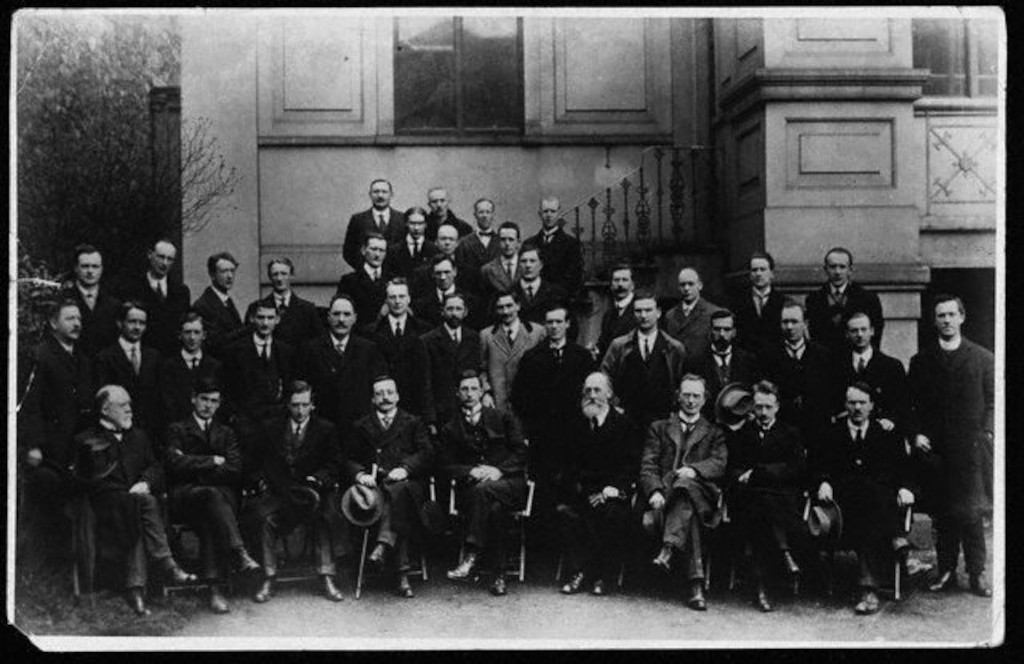
"we are remaking this organisation of Sinn Féin for the real purpose and object towards it will work".
Arthur Griffith, original founder of Sinn Féin, called the entry of non-whites into Europe "The Crime Against Europe" while editor of the newspaper Nationality:
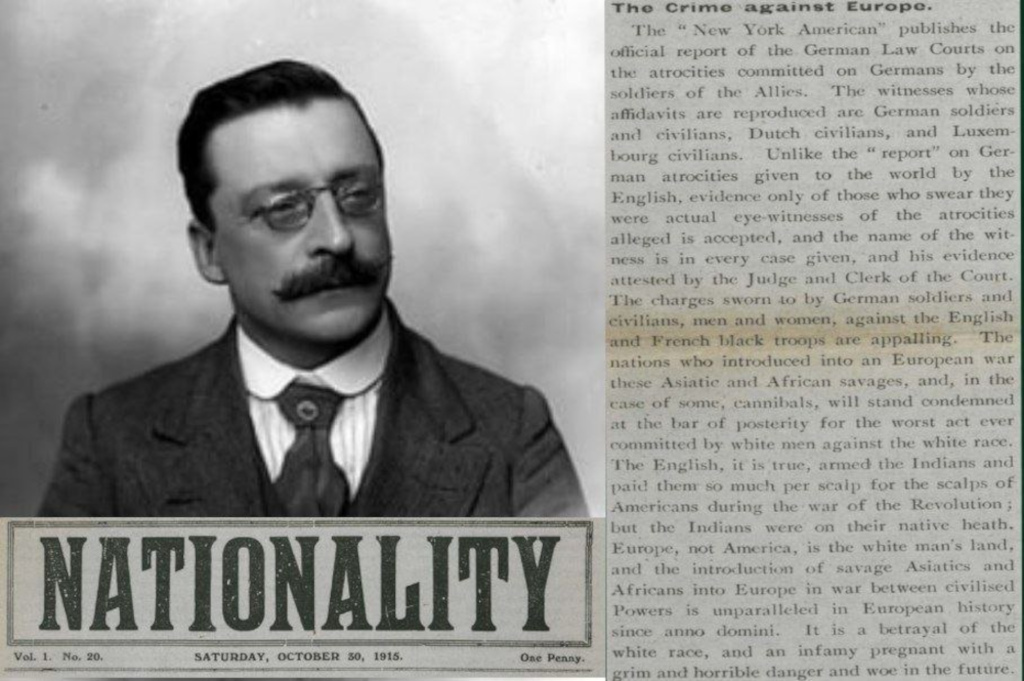
"Europe ... is the white man's land, and the introduction of savage Asiatics and Africans into Europe in war between civilised Powers is unparalleled in European history since anno domini. It is a betrayal of the white race, and an infamy pregnant with a grim and horrible danger and woe in the future".
Its split in 1922 in response to the Anglo-Irish Treaty which led to the Irish Civil War and saw the origins of Fianna Fáil and Fine Gael, the two parties which have since dominated Irish politics. Another split in the remaining Sinn Féin organisation in the early years of the Troubles in 1970 led to the Sinn Féin of today, which is a republican, left-wing nationalist and secular party.
"Communism... as it has manifested itself in many countries... is not an ideology which would commend itself to the Irish people"
During the 1930s Sinn Féin did not contest any elections. Its relationship with the Irish Republican Army (IRA) soured and during the 1930s the IRA severed its links with the party. The party suffered with the introduction of internment during the Emergency. An attempt in the 1940s to access funds which had been put in the care of the High Court led to the Sinn Féin Funds case in 1948, which the party lost and in which the judge ruled that it was not the direct successor of the Sinn Féin of 1917.
In 1947 the IRA held its first Army Convention since World War II. The leadership became dominated by three figures, known jokingly as the "three Macs", Tony Magan, Paddy McLogan, and Tomás Óg Mac Curtain. The "three Macs" believed that a political organisation was necessary to help rebuild the IRA. IRA members were instructed to join Sinn Féin en masse, and despite the IRA's small numbers following WW2, they were successfully able to fully take over the organisation.
This takeover of Sinn Féin was made possible due to the weak state of Sinn Féin itself; the party had become a shell of its former self. Paddy McLogan was named Sinn Féin president in 1950, with fellow IRA member Tomás Ó Dubhghaill named vice-president, signalling the IRA's complete control of the party's apparatus. In the Irish general election of 1957 Sinn Féin fielded 19 abstentionist candidates and won four seats and 6.5% of the popular vote. The introduction of internment and the establishment of military tribunals hindered the IRA campaign and it was called off in 1962. In the 1961 General Election the party won no seats and its vote dropped to 3.2%.
There were parallel splits in the republican movement in the period 1969 to 1970; one in December 1969 in the IRA, and the other in Sinn Féin in January 1970. Sinn Féin was given a concrete presence in the community when the IRA declared a ceasefire in 1975. 'Incident centres' were set up to communicate potential confrontations to the British authorities. They were manned by Sinn Féin, which had been legalised the year before by Secretary of State, Merlyn Rees.
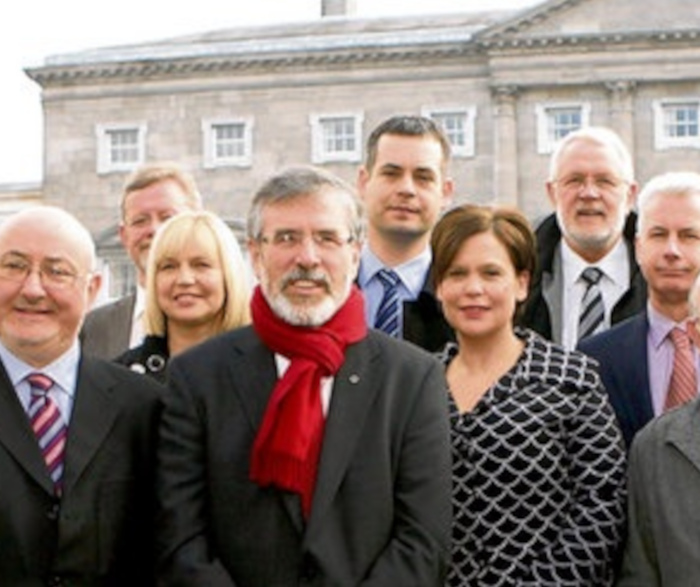
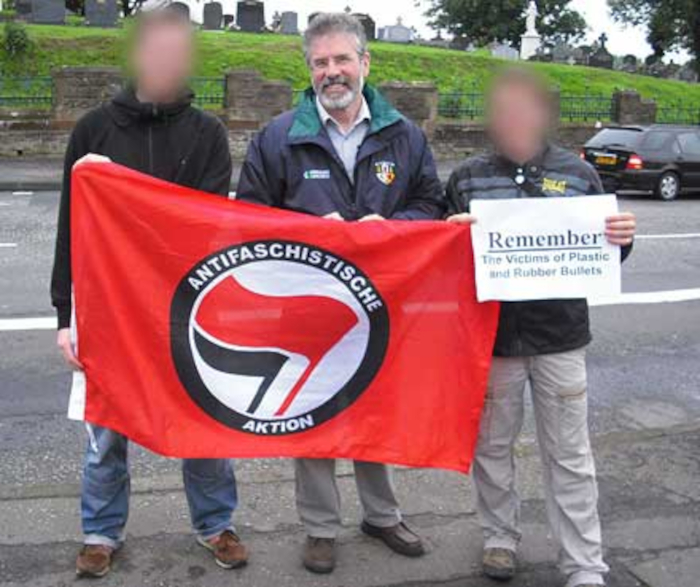
"I stand over the context and main point of my tweet, which were the parallels between people in struggle. Like African Americans, Irish nationalists were denied basic rights. I have long been inspired by Harriet Tubman, Frederick Douglass, Rosa Parks, Martin Luther King, and Malcolm X, who stood up for themselves and for justice.".
Gerard Adams was the president of Sinn Féin between 13 November 1983 and 10 February 2018. In 1983, Adams was elected president of Sinn Féin and became the first Sinn Féin MP elected to the British House of Commons since Phil Clarke and Tom Mitchell in the mid-1950s. Following his election as MP for Belfast West, the British government lifted a ban on his travelling to Great Britain. In line with Sinn Féin policy, he refused to take his seat in the House of Commons.
Journalists Ed Moloney, Peter Taylor named Adams as part of the IRA leadership since the 1970s. They state Adams became the IRA's Chief of Staff following the arrest of Seamus Twomey in early December 1977, and that he had remained a member of the IRA Army Council until 2005 according to Irish Minister for Justice, Equality and Law Reform Michael McDowell. Mark Urban, and historian Richard English have all named Adams as part of the IRA leadership since the 1970s and former IRA members Dolours Price and Brendan Hughes both independently stated that they served under Adams in the IRA.
In October 2013, Adams' brother Liam was found guilty of 10 offences, including rape and gross indecency committed against his own daughter. When the allegations of abuse were first made public in a 2009 UTV programme, Gerry Adams subsequently alleged that his own father had subjected family members to emotional, physical, and sexual abuse. On 27 November 2013, Liam was jailed for 16 years.
Film Television
Breakfast on Pluto
Kitten runs away from home, catching a ride with a glam rock band, Billy Hatchet and the Mohawks, and flirting with leader Billy. He installs the lovestruck, homeless Kitten in a trailer, where she discovers he's hiding guns for the IRA. Meanwhile, Irwin has begun to work with the IRA, much to his now-girlfriend Charlie's dismay.
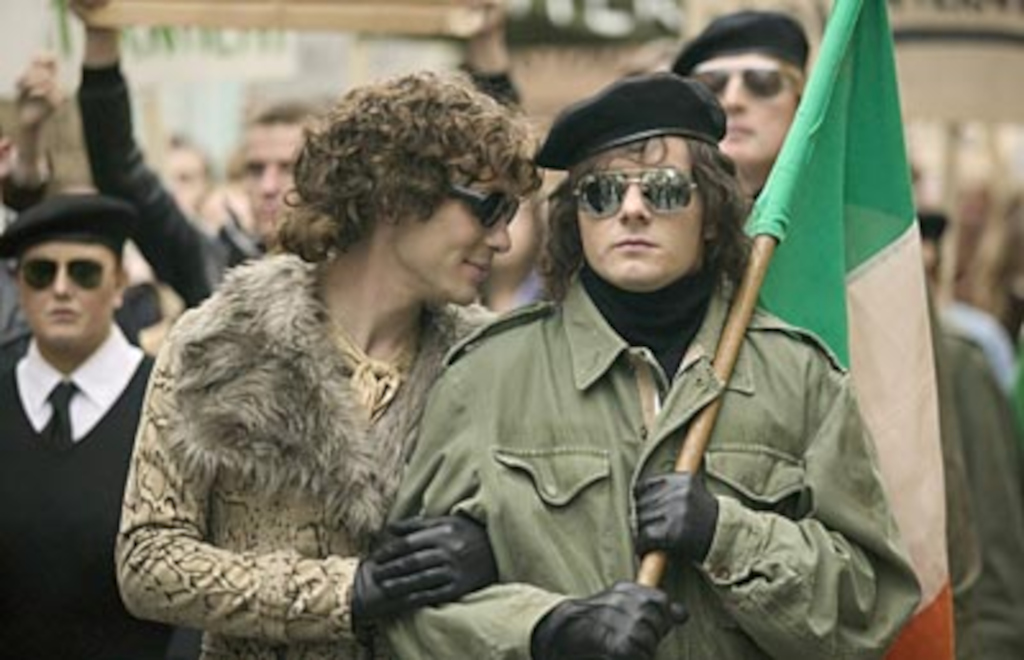
Kitten dismisses Irwin's politics as "serious, serious, serious," but after Lawrence is killed by police detonating a suspected IRA car bomb, she tosses their gun cache into a lake. Billy abandons Kitten to flee the IRA, forcing her to face the "serious, serious, serious," men alone. Her lack of connection to their politics saves her from being murdered.
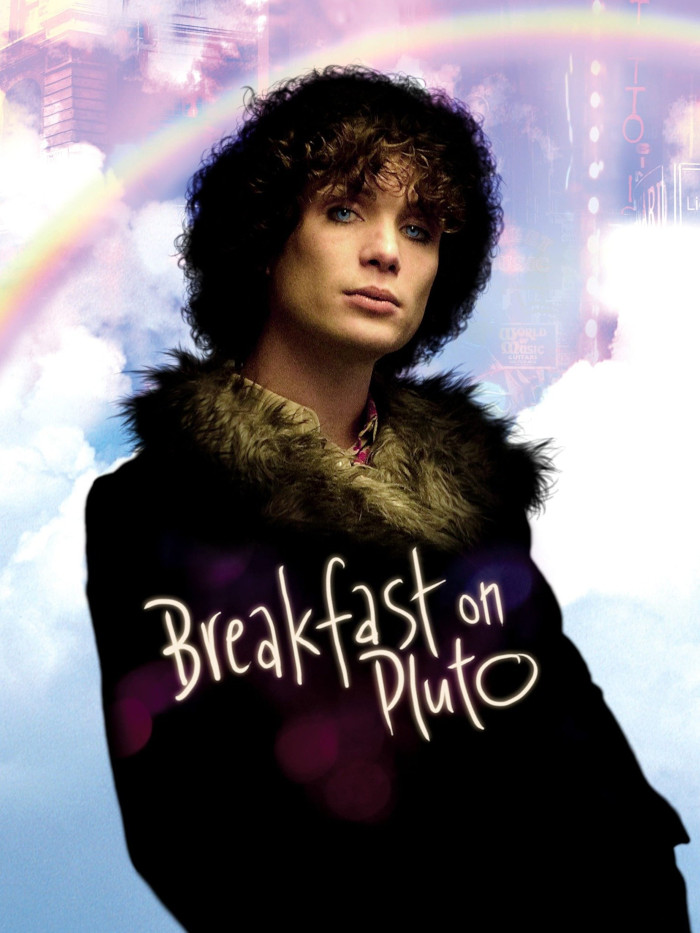
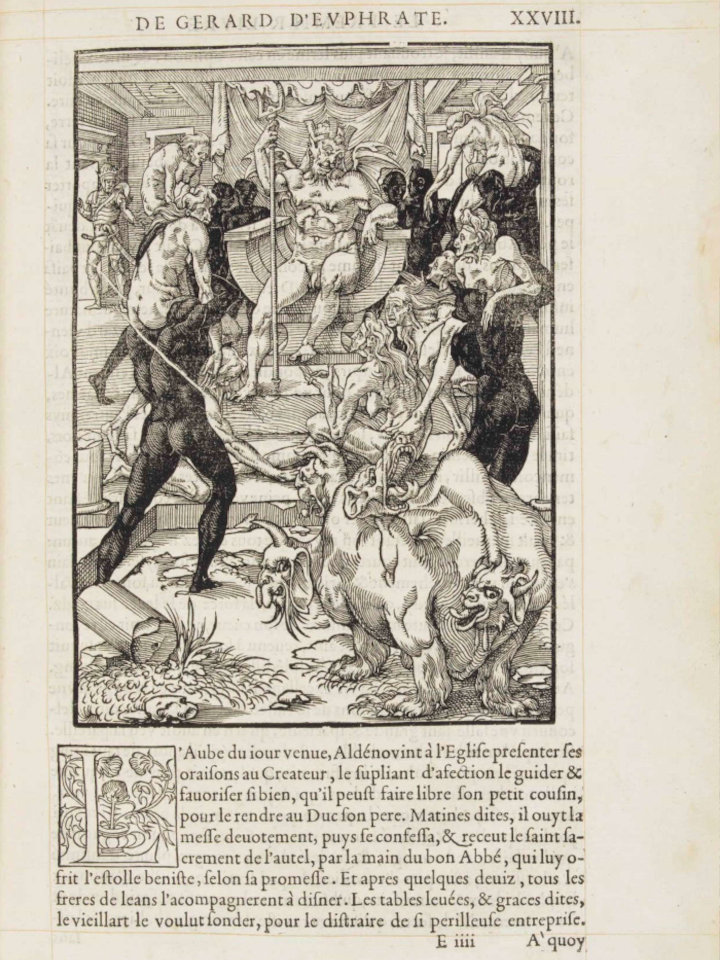
In the film a magician named Bertie Vaughan asks Kitten what she is writing in her notebook. She explains it's the story of "The Phantom Lady" who was "swallowed up" by the big city, then reveals it's about the mother she is seeking. Bertie hires her to be his magician's assistant, turning her life story into a hypnosis act.
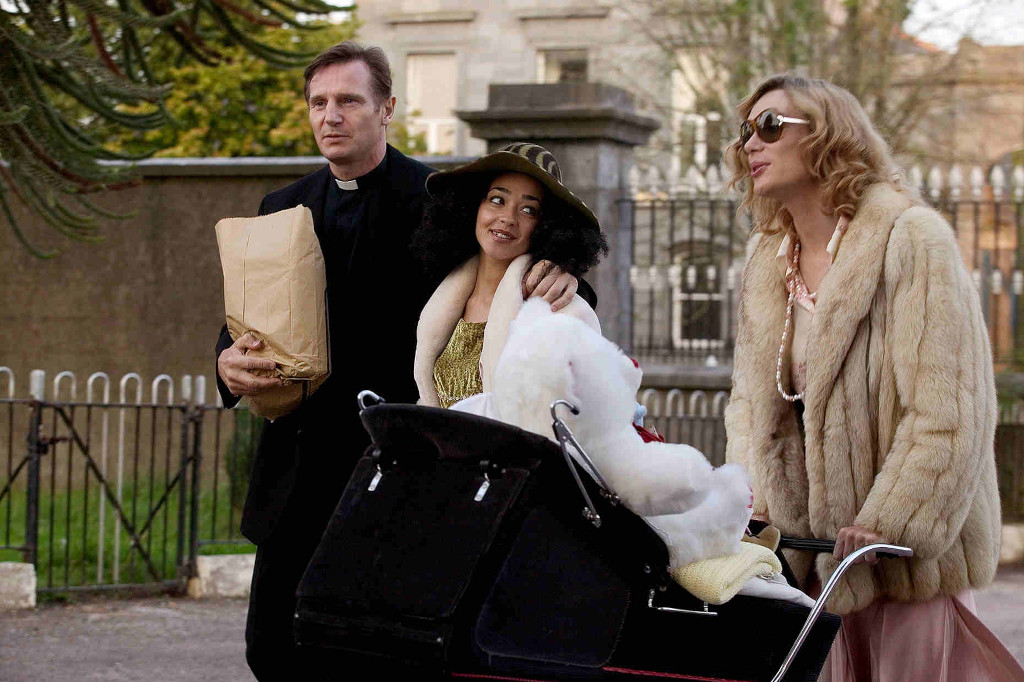
The Crying Game
At a rural Northern Irish fairground, a Provisional IRA volunteer named Fergus (Stephen Rea) and a unit of other IRA members, led by Peter Maguire (Adrian Dunbar), kidnap a black British soldier named Jody (Forest Whitaker) after a female member of their unit, Jude (Miranda Richardson), lures Jody to a secluded area by promising sex.

The unit intends to hold Jody until an imprisoned IRA member is released, and if their demands are not met within three days, he will be executed. Fergus—assigned to stand guard over Jody—begins bonding with him, and Jody tells Fergus the fable of the Scorpion and the Frog.
The film Crying Game was directed and witten by Neil Jordan, produced by Stephen Woolley, Palace, Channel Four Films, Eurotrustees, British Screen Productions and distributed by Live Video and Miramax Films.